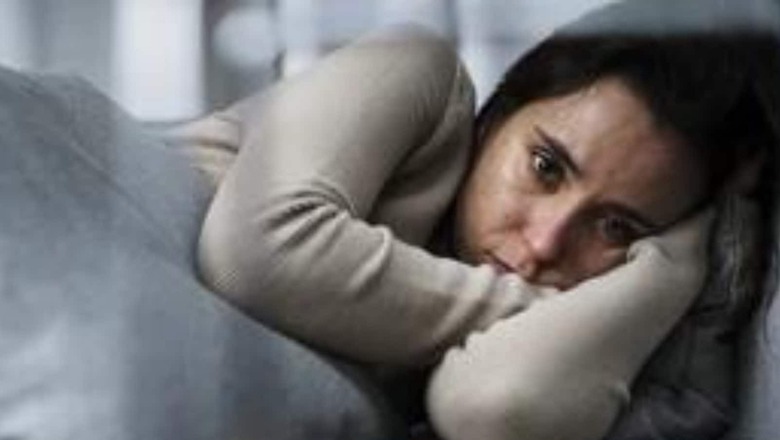
views
The needs of women are getting more attention, so it is no surprise mental health is at the forefront of improvements in care. Take living with Attention-Deficit/Hyperactivity Disorder (ADHD), for example. Adult women are currently being diagnosed with ADHD more rapidly than any other cohort, which is an intriguing development given that ADHD is a condition that starts in childhood.
Women diagnosed with ADHD as adults often have troublesome lives. A group of women spoke about living with ADHD in a video made collaboratively between the Centre for ADHD Awareness Canada and the Canadian ADHD Resource Alliance. “I wish I knew that I had ADHD when I was younger,” said one woman, known as Dana. Ketzia, another woman from the clip, says “I think what happens to folks that are not ever diagnosed is a lot of broken dreams.” The resounding message is that, when untreated, ADHD can mean a life of pain and suffering. Women with undiagnosed ADHD grow up being called daydreamers, and feel judged, dismissed, and rejected by their peers. Growing up without understanding why they are different leaves deep emotional scars.
For many of us, thinking about ADHD conjures up the image of excitable boys. Females share the same ADHD symptoms as males, but they tend to be more inattentive and less hyperactive and impulsive than boys. Because hyperactive and impulsive symptoms disrupt and annoy others, they are easily and quickly recognised by parents and teachers. With girls, however, ADHD shows up as being easily distracted, overwhelmed, and lacking in effort or motivation. Speaking like a ‘chatterbox,’ or acting without thinking are typical female ADHD symptoms, as is a lack of focus and difficulty sustaining attention. Young girls with ADHD may also struggle with disorganisation, poor time management, and emotional dysregulation (mood swings, low frustration tolerance, irritability).
Teachers and parents often miss these symptoms, and girls are left to struggle alone. Whether predominantly inattentive or hyperactive, ADHD is often associated with difficulty in forming friendships and maintaining social relationships. Reading social cues and following conversations may be problematic, leading to isolation from peer groups. Dropping out of school, academic underachievement and low self-esteem are unfortunate outcomes of a missed ADHD diagnosis in youth.
Without the support and tools to manage their symptoms, ADHD often ends up managing life choices. A hyperactive child may become a restless woman who feels like something just isn’t ‘right.’ Inattention may become difficulty completing chores or remembering appointments and deadlines. Distractibility can make daily tasks overwhelming and make life feel out of control. To others, women with ADHD may appear lazy, disorganised, and be left out of social opportunities. After lifelong struggles with these symptoms, according to Dr Dora Wynchank, a physician specializing in ADHD in the Netherlands, many women see their disorganization issues as a character defect.
In the Indian milieu, strong social networks, particularly for girls and women, provide a protective scaffolding. It is common to hire help for tasks like housekeeping and preparing meals, and sometimes childcare. As life demands increase, from higher education, work, finances, to family, marriage, and social functions, there is a parallel process of increasing independence and decreasing support. The organisation needed at these life stages, and the pressure to conform to social norms can trigger underlying ADHD symptoms. It is often at this time that women with ADHD feel like life is falling apart. Women with ADHD may develop strategies to cope with feeling inadequate. Some may turn to yoga and meditation, but many turn to overeating, overspending, avoiding social situations and substance abuse. Many develop secondary mental health challenges like anxiety and depression.
A study published in the journal Lancet Psychiatry in 2020 (The burden of mental disorders across the states of India: The Global Burden of Disease Study 1990-2017), reported on the prevalence of mental health difficulties across the different states in India. Even before the pandemic, in 2017, the two most prevalent mental health difficulties were depressive disorders and anxiety disorders, with higher rates in older females than in males. Dr Wynchank says hormonal changes in women make them more vulnerable to depression. Underlying ADHD can make this debilitating, even leading to suicide.
Women need treatment for ADHD, and the first step is acknowledging their struggles and symptoms in childhood. While we are working on improving the lives of girls and women with ADHD, support, and effective symptom management tools, like creating safe schools and social spaces for girls to be themselves without fear of judgment, can make a big difference.
The authors thank Professor Stephen V Faraone for his collaboration with this article. Professor Faraone is president of the World Federation of ADHD and Distinguished Professor, SUNY Upstate Medical University, USA (www.ADHDevidence.org). Mel Lefebvre is Communications Director; Sarojini M. Sengupta, PhD is CEO of AIMH (www.aimhinc.com). Views expressed are personal.
Read all the Latest Opinions here















Comments
0 comment